
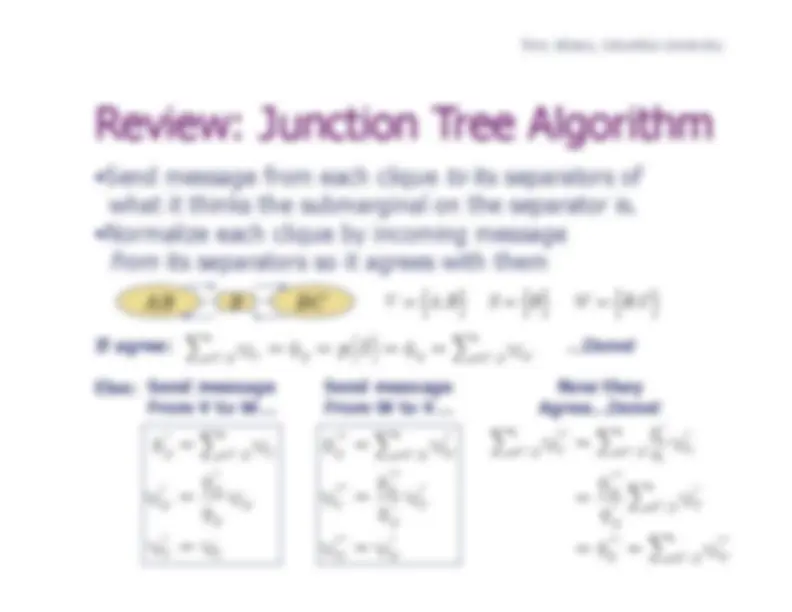
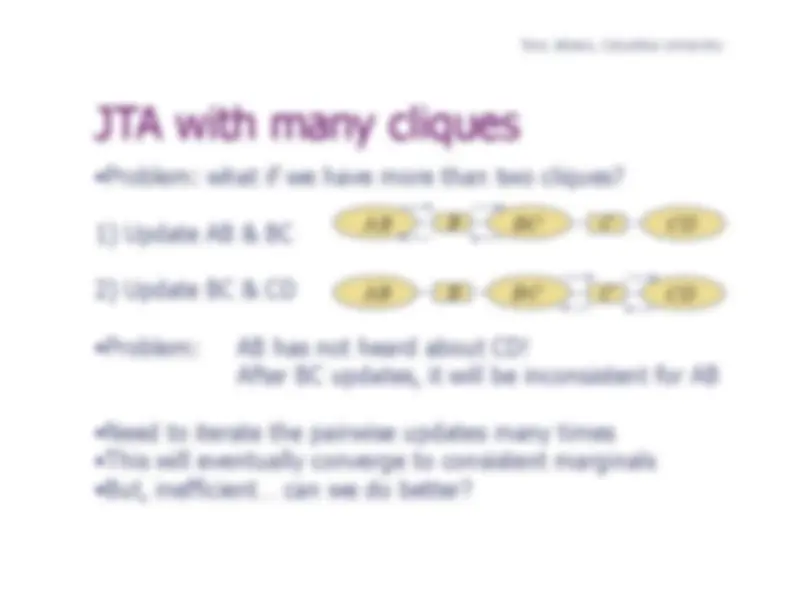
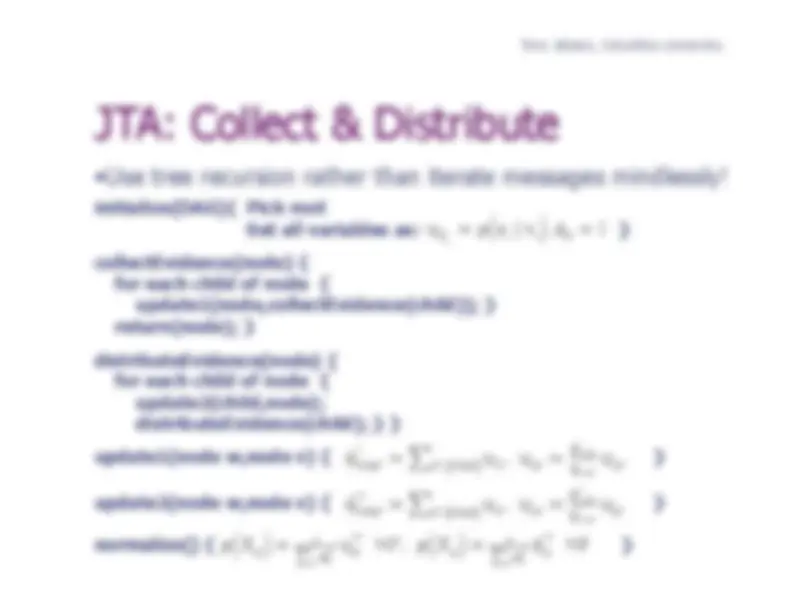
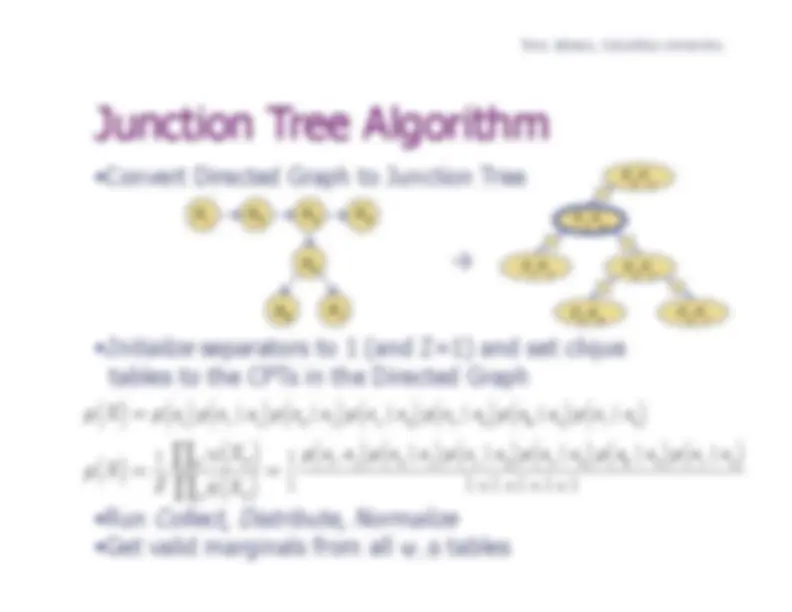
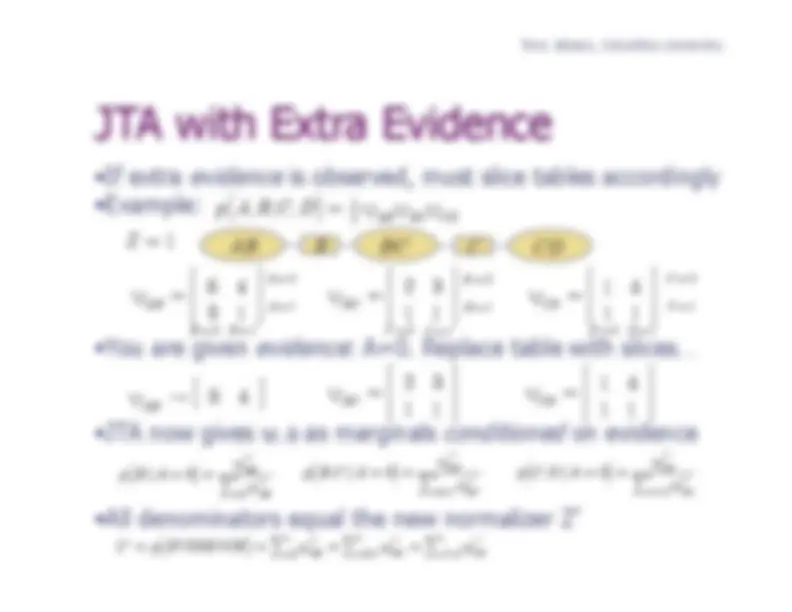
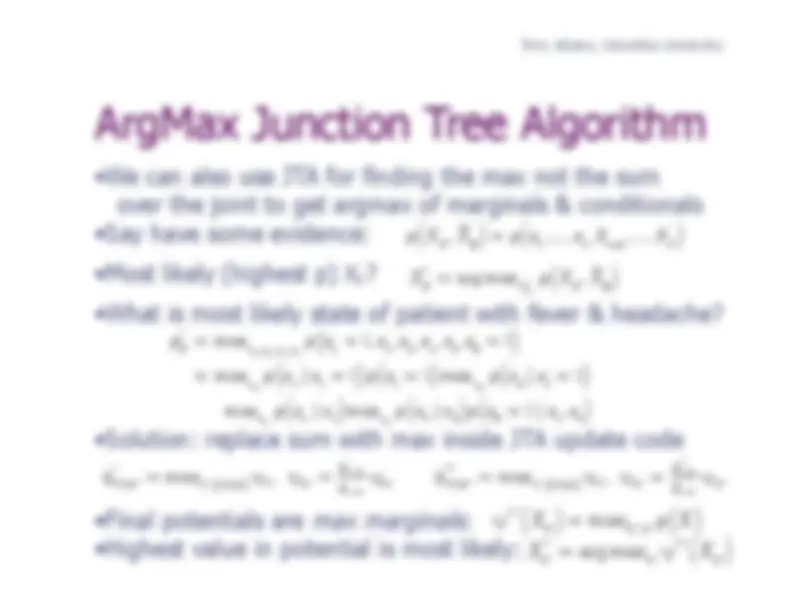


Study with the several resources on Docsity

Earn points by helping other students or get them with a premium plan


Prepare for your exams
Study with the several resources on Docsity

Earn points to download
Earn points by helping other students or get them with a premium plan
Community
Ask the community for help and clear up your study doubts
Discover the best universities in your country according to Docsity users
Free resources
Download our free guides on studying techniques, anxiety management strategies, and thesis advice from Docsity tutors
The Junction Tree Algorithm and ArgMax Junction Tree Algorithm. It covers topics such as Collect & Distribute, Algorithmic Complexity, and ArgMax Junction Tree Algorithm. The document also provides examples and code snippets. likely to be useful as study notes, lecture notes, or summary for a course on Machine Learning.
Typology: Study notes
1 / 12

This page cannot be seen from the preview
Don't miss anything!







initialize(DAG){ Pick root
Set all variables as: }
collectEvidence(node) {
for each child of node { update1(node,collectEvidence(child)); }
return(node); }
distributeEvidence(node) {
for each child of node {
update2(child,node); distributeEvidence(child); } }
update1(node w,node v) { }
update2(node w,node v) { }
normalize() { }
ψ C i
p X
= 1 ∑ C ψ C^ **
ψ C
** ∀ C , p X
= 1 ∑ (^) S^ φ S^ **
φ S
** ∀ S
φ V ∩ W
= ψ
, ψ W =
φ V^ * ∩ W φ V ∩ W
ψ W
φ V ∩ W
** = ψ
, ψ W =
φ V^ ** ∩ W φ V^ *^ ∩ W
ψ W
Polynomial in # of nodes
Polynomial in # of nodes (convert pdf to slices)
Suboptimal=Polynomial, Optimal=NP
Polynomial in # of cliques
Polynomial (linear) in # of cliques, Exponential in Clique Cardinality
1
Z
ψ X
φ X
=
1
1
p x 1 , x
p x 3 | x
p x 4 | x
p x 5 | x
p x 6 | x
p x 7 | x
1 × 1 × 1 × 1 × 1
1
2
2
3
3
4
5
7
3
5
5
6
p x 2 | x
p x 3 | x
p x 4 | x
p x 5 | x
p x 6 | x
p x 7 | x
p X F , X
= p x 1 ,…, x n , x n + 1 ,…, x
X F
= arg max XF p X F , X
p F
= max x 2 , x 3 , x 4 , x 5 p x 1 = 1 , x 2 , x 3 , x 4 , x 5 , x 6
= max x 2 p x 2 | x 1
1
x 3 p x 3 | x 1
max x 4
5
ψ
** X
= max U \ C
C
= arg max C ψ
** X
φ V ∩ W
= max V ( V ∩ W ) ψ V , ψ W =
φ V^ * ∩ W φ V ∩ W
ψ W φ V ∩ W
** = max V \ (^) ( V ∩ W ) ψ V , ψ W =
φ V^ ** ∩ W φ V^ *^ ∩ W
ψ W
p x 1 , x
=
x 1
A
x 1
B
x 1
C
x 2 = 0
x 2 = 1
. 14. 05. 27 . 24. 20. 10
⎡
⎣
⎢ ⎢
⎤
⎦
⎥ ⎥
p x
= x 2 =^0
x 2 = 1
. 46 . 54
⎡
⎣
⎢ ⎢
⎤
⎦
⎥ ⎥
p x
=
A B C
⎡ ⎣⎢^
⎤ ⎦⎥